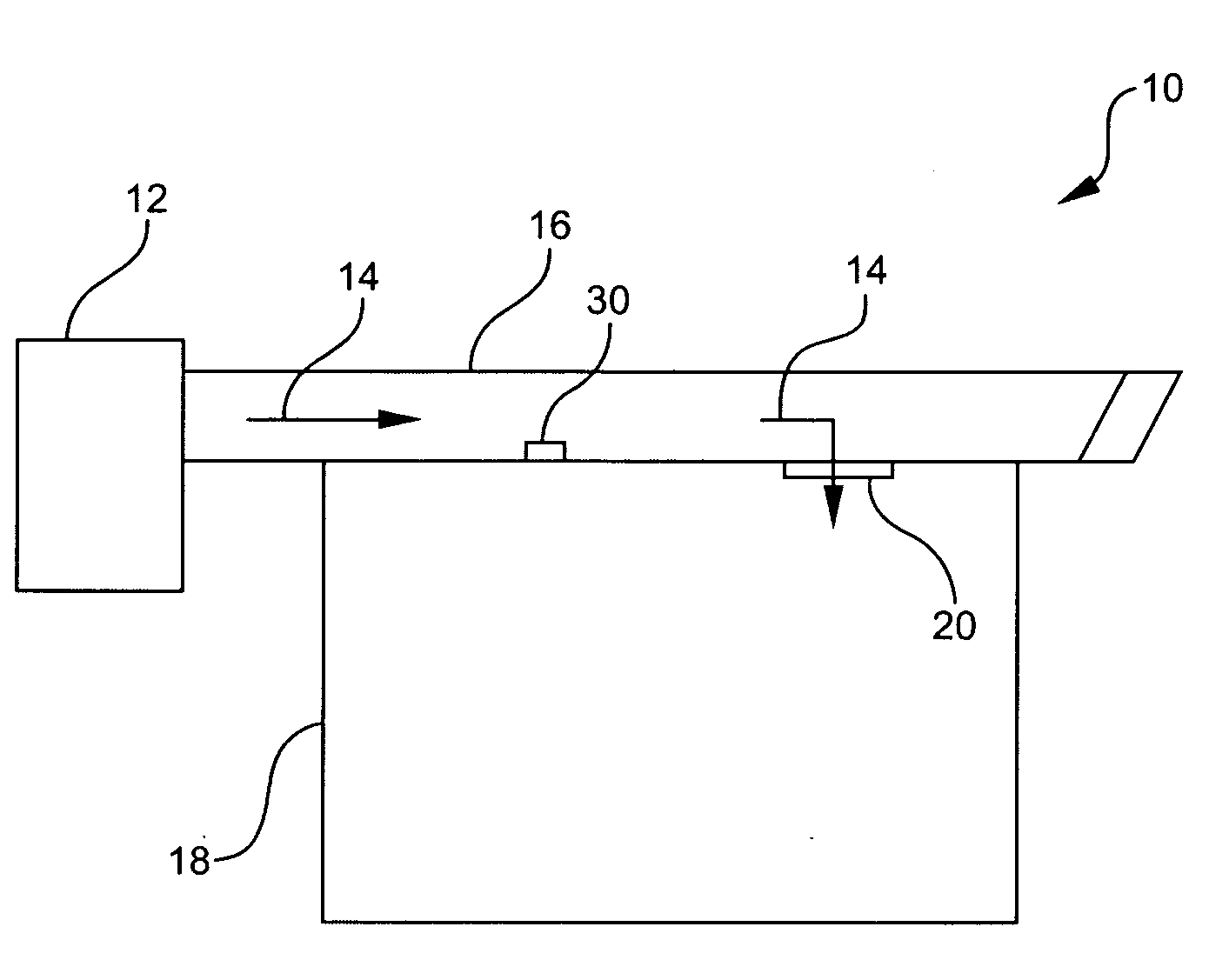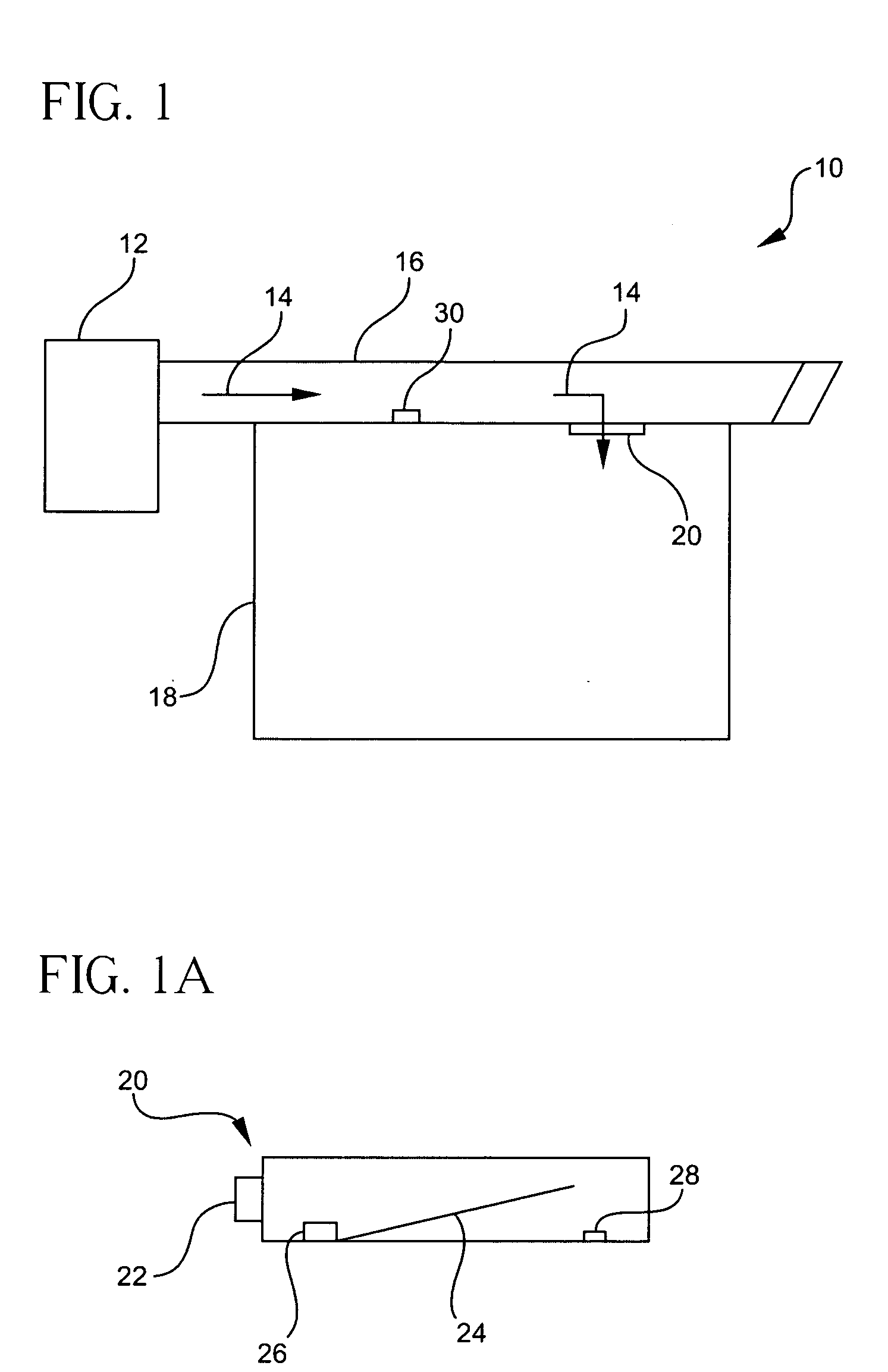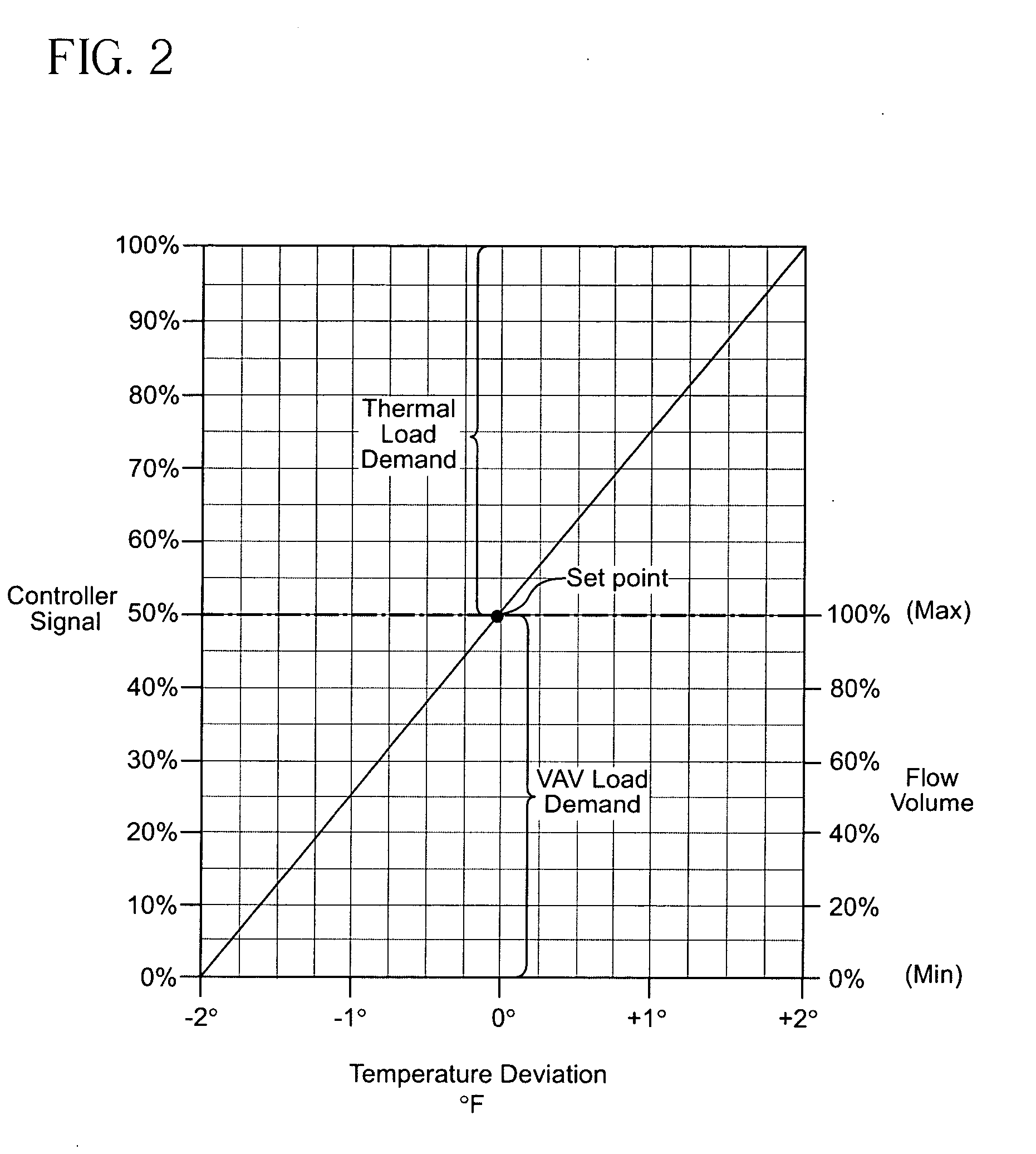Variable air volume system including BTU control function
a variable air volume and control function technology, applied in the field of variable air volume systems, can solve the problems of sudden increase in the temperature of the supply air, uncomfortable temperature swings within the individual zones, and significant temperature swings in the vav system utilizing an on/off heating or cooling unit, so as to improve indoor air quality, save energy costs, and improve environmental comfort
- Summary
- Abstract
- Description
- Claims
- Application Information
AI Technical Summary
Benefits of technology
Problems solved by technology
Method used
Image
Examples
Embodiment Construction
[0027] Referring now to FIG. 1, variable air volume (VAV) system 10 includes a heating, ventilating and air conditioning (HVAC) package 12 for supplying cold or heated supply air 14 (as well as fresh outside air) into a supply air duct 16. A plurality of zones 18 (e.g., an office, conference room, etc.) communicate with supply duct 16 through a plurality of flow control boxes 20 (e.g., pressure independent variable air volume boxes). Typically, each individual zone 18 has at least one flow control box directly associated therewith. VAV system 10 preferably includes a plurality of controllers 22, one controller being associated with each of the individual flow control boxes. However, it is contemplated herein that VAV system 10 can also utilize a single central controller to communicate with all the individual flow control boxes.
[0028] Each of flow control boxes 20 preferably includes a movable damper 24 for regulating flow volume between a selected minimum flow volume (e.g., 333 ft...
PUM
 Login to View More
Login to View More Abstract
Description
Claims
Application Information
 Login to View More
Login to View More - R&D
- Intellectual Property
- Life Sciences
- Materials
- Tech Scout
- Unparalleled Data Quality
- Higher Quality Content
- 60% Fewer Hallucinations
Browse by: Latest US Patents, China's latest patents, Technical Efficacy Thesaurus, Application Domain, Technology Topic, Popular Technical Reports.
© 2025 PatSnap. All rights reserved.Legal|Privacy policy|Modern Slavery Act Transparency Statement|Sitemap|About US| Contact US: help@patsnap.com



